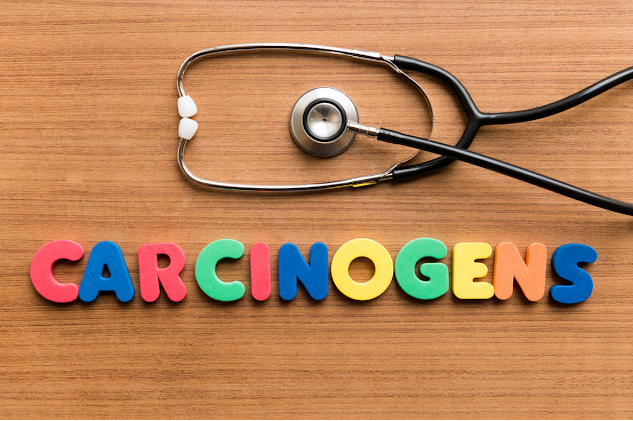We use so many cosmetics to highlight, appear, and enhance attractive features in our daily life. The word "make-up "defines cosmetics denotes mainly colored products proposed to modify the build. Influences like a commercial and public receipt, effects on optimal skincare goods.
Publicity links products and customers endorsing advantageous aids inspired by sensitive advertisements and resolves their low confidence. The need to look beautiful has been an urge in the humanoid race since the early days. The endless variety of products like skincare products, eye products, hair products, fragrances, oral hygiene, nail products, antiperspirants, etc., holds toxic chemicals that can damage the health used exclusively by women.
Despite liabilities subsequently, people obsessed with beauty attracted to forged their appearance as a cure for their uncertainties. The predictable worth of the cosmetic industry is 380.2 billion dollars globally. As a user, we are continuously involved in using prettiness and personal care products. But these products, which are supposed to make us feel well or look beautiful, have a profound dark sideways. Various toxic ingredients and harmful chemicals used in cosmetics are unified in their adequate confines. These chemicals may cause severe effects through long-time deposition on skin and tissues or organs, instigating carcinogenicity. Cosmetics have trickled into the fashion world and play a prominent role in one's typical lifespan.
It turns out to be a necessity to make people aware of various harmful effects due to cosmetics. These are responsible for increased cancer risks like breast cancer, hematologic malignancies, ovarian cancer, and skin cancer. About 41% of cancer reports between 2004-2017 are due to the adverse incident in cosmetics; frequent habit of cosmetics represents the health risks and recurring effects credited to the toxic ingredients commonly found in their preparations like coal tar in hair dyes, di butyl phthalate in nail polish, diethanolamine in shampoo and soap, paraben preservative, fragrance, Polyethylene glycols in creams, Siloxanes, sulfates, triclosan. The metals which are accumulated over some time causes health problems like lead in lipsticks, nickel, cadmium in hair creams, Petrolatum in moisturizers, mercury, and hydroquinone in skin lightening creams causes latent mutations .phenylenediamine in black henna tattoos causes partial hypertrichosis. Though the various structures for the regulation and quality control of cosmetics worldwide are pretty complex and wide-ranging, they should be more challenging in the addition of new substances with toxic potential in the design of cosmetics to avoid damages to human health.
When products are manufacturing, they use chemicals purposefully to shine, glittery feel. To stimulate improvements in the manufacturing, promotion, and use of cosmetic products by the population, it is essential to apply a combined cosmetic vigilance around the world, a genuine revenue of finding information by the care of cosmetic products and their ingredients, preventing hazards related to cosmetics become a communal severe health problem. Likewise, advertising the organic and natural products further must increase & should mention the component percentage with an overall cumulative effect on health over time.
Some cosmetics brands mention that their product is paraben-free, formaldehyde, bithionol, or chloroform but contains other chemicals that are damaging. It's not about hating chemicals but about what the stuff actually has. As per FDA, they should use a vacuum system, so cancer-related by-products can be evaded. People also need to know that some cosmetics are safer to use but risky when used in the wrong way. Cosmetics must have instructions, or cautionary statements looked for the safety of products people use.
Natural & Organic, USDA-certified organic ingredients, safe synthetics. The most important ingredients that are used in natural cosmetics are antioxidants, emulsifying agents, hydrolats and plant extracts, humectants, exfoliants, and surfactants, making cosmetic products such as body scrubs and face masks, at home using simple ingredients like turmeric, milk, aloe vera gel, tulsi, apple cider vinegar, soda, colloidal oatmeal, coconut oil, honey, tea tree oil, gentle soap & detergent.
Practicing Yoga exercise can do wonders for the skin and muscles by detoxifying and falling cortisol levels. It also increases the skin's flexibility and helps you get rid of wrinkles. Dietary changes are important because some foods containing more sugar causes extra insulin production or produce more oil in glands, increasing acne's peril. To overcome this problem, people should use fewer products or products with a shorter ingredient list, check labels, & look up any unfamiliar ingredients using a resource such as the EWG's Skin Deep. Eating fruits or vegetables containing vitamins, healthy fats, fibers, proteins are good habits and valuable to health and skin. This beneficial natural upkeeps help to avoid artificial cosmetic products which are hazardous and carcinogenic.
References-
1. Claudia juliano, Giovanni Antonio Magrini, Cosmetic Ingredients as Emerging Pollutants of Environmental and Health Concern, 2017; 4(2), 11; https://doi.org/10.3390/cosmetics4020011.
2. Draelos ZD. Cosmetics: The Medicine of Beauty. Journal of Cosmetic Dermatology. 2015;14 (2):91; https://doi.org/10.1111/jocd.12146.
Author - Shruti Chougule





Useful information. Thanks Shruti chougule for good work. Keep doing!
ReplyDelete